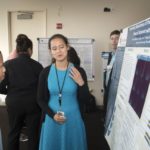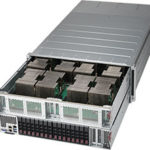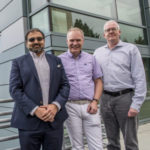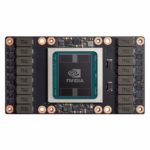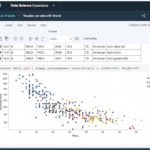“Computing is one of the least diverse science, technology, engineering, and mathematics (STEM) fields, with an under-representation of women and minorities, including African Americans and Hispanics. Leveraging this largely untapped talent pool will help address our nation’s growing demand for data scientists. Computational approaches for extracting insights from big data require the creativity, innovation, and collaboration of a diverse workforce.”
Archives for September 2017
OpenHPC: Project Overview and Updates
Karl Schulz from Intel gave this talk at the MVAPICH User Group. “There is a growing sense within the HPC community for the need to have an open community effort to more efficiently build, test, and deliver integrated HPC software components and tools. To address this need, OpenHPC launched as a Linux Foundation collaborative project in 2016 with combined participation from academia, national labs, and industry. The project’s mission is to provide a reference collection of open-source HPC software components and best practices in order to lower barriers to deployment and advance the use of modern HPC methods and tools.”
Bright Computing Powers SingleParticle.com for cryo-EM
Today Bright Computing announced a reseller agreement with San Diego-based SingleParticle.com. The company specializes in turn-key HPC infrastructure designed for high performance and low total cost of ownership (TCO), serving the global research community of cryo-electron microscopy (cryoEM). “With Bright, the management of an HPC cluster becomes very straightforward, empowering end users to administer their workloads, rather than relying on HPC experts,” said Dr. Clara Cai, Manager at SingleParticle.com. “We are confident that with Bright’s technology, our customers can maintain our turn-key cryoEM cluster with little to no prior HPC experience.”
A Perspective on HPC-enabled AI
Tim Barr from Cray gave this talk at the HPC User Forum in Milwaukee. “Cray’s unique history in supercomputing and analytics has given us front-line experience in pushing the limits of CPU and GPU integration, network scale, tuning for analytics, and optimizing for both model and data parallelization. Particularly important to machine learning is our holistic approach to parallelism and performance, which includes extremely scalable compute, storage and analytics.”
Supermicro steps up with Optimized Systems for NVIDIA Tesla V100 GPUs
Today Supermicro announced support for NVIDIA Tesla V100 PCI-E and V100 SXM2 GPUs on its industry leading portfolio of GPU server platforms. With our latest innovations incorporating the new NVIDIA V100 PCI-E and V100 SXM2 GPUs in performance-optimized 1U and 4U systems with next-generation NVLink, our customers can accelerate their applications and innovations to help solve the world’s most complex and challenging problems.”
Sowing Seeds of Quantum Computation at Berkeley Lab
“Berkeley Lab’s tradition of team science, as well as its proximity to UC Berkeley and Silicon Valley, makes it an ideal place to work on quantum computing end-to-end,” says Jonathan Carter, Deputy Director of Berkeley Lab Computing Sciences. “We have physicists and chemists at the lab who are studying the fundamental science of quantum mechanics, engineers to design and fabricate quantum processors, as well as computer scientists and mathematicians to ensure that the hardware will be able to effectively compute DOE science.”
Penguin Computing Launches NVIDIA Tesla V100-based Servers
Today Penguin Computing announced strategic support for the field of artificial intelligence through availability of its servers based on the highly-advanced NVIDIA Tesla V100 GPU accelerator, powered by the NVIDIA Volta GPU architecture. “Deep learning, machine learning and artificial intelligence are vital tools for addressing the world’s most complex challenges and improving many aspects of our lives,” said William Wu, Director of Product Management, Penguin Computing. “Our breadth of products covers configurations that accelerate various demanding workloads – maximizing performance, minimizing P2P latency of multiple GPUs and providing minimal power consumption through creative cooling solutions.”
AMAX.AI Unveils [SMART]Rack Machine Learning Cluster
Today AMAX.AI launched the [SMART]Rack AI Machine Learning cluster, an all-inclusive rackscale platform is maximized for performance featuring up to 96x NVIDIA Tesla P40, P100 or V100 GPU cards, providing well over 1 PetaFLOP of compute power per rack. “The [SMART]Rack AI is revolutionary to Deep Learning data centers,” said Dr. Rene Meyer, VP of Technology, AMAX. “Because it not only provides the most powerful application-based computing power, but it expedites DL model training cycles by improving efficiency and manageability through integrated management, network, battery and cooling all in one enclosure.”
IBM Moves Data Science Forward with Integrated Analytics System
Today IBM announced the Integrated Analytics System, a new unified data system designed to give users fast, easy access to advanced data science capabilities and the ability to work with their data across private, public or hybrid cloud environments. “Today’s announcement is a continuation of our aggressive strategy to make data science and machine learning more accessible than ever before and to help organizations like AMC, begin harvesting their massive data volumes – across infrastructures – for insight and intelligence,” said Rob Thomas, General Manager, IBM Analytics.
Video: How MVAPICH & MPI Power Scientific Research
Adam Moody from LLNL presented this talk at the MVAPICH User Group. “High-performance computing is being applied to solve the world’s most daunting problems, including researching climate change, studying fusion physics, and curing cancer. MPI is a key component in this work, and as such, the MVAPICH team plays a critical role in these efforts. In this talk, I will discuss recent science that MVAPICH has enabled and describe future research that is planned. I will detail how the MVAPICH team has responded to address past problems and list the requirements that future work will demand.”

